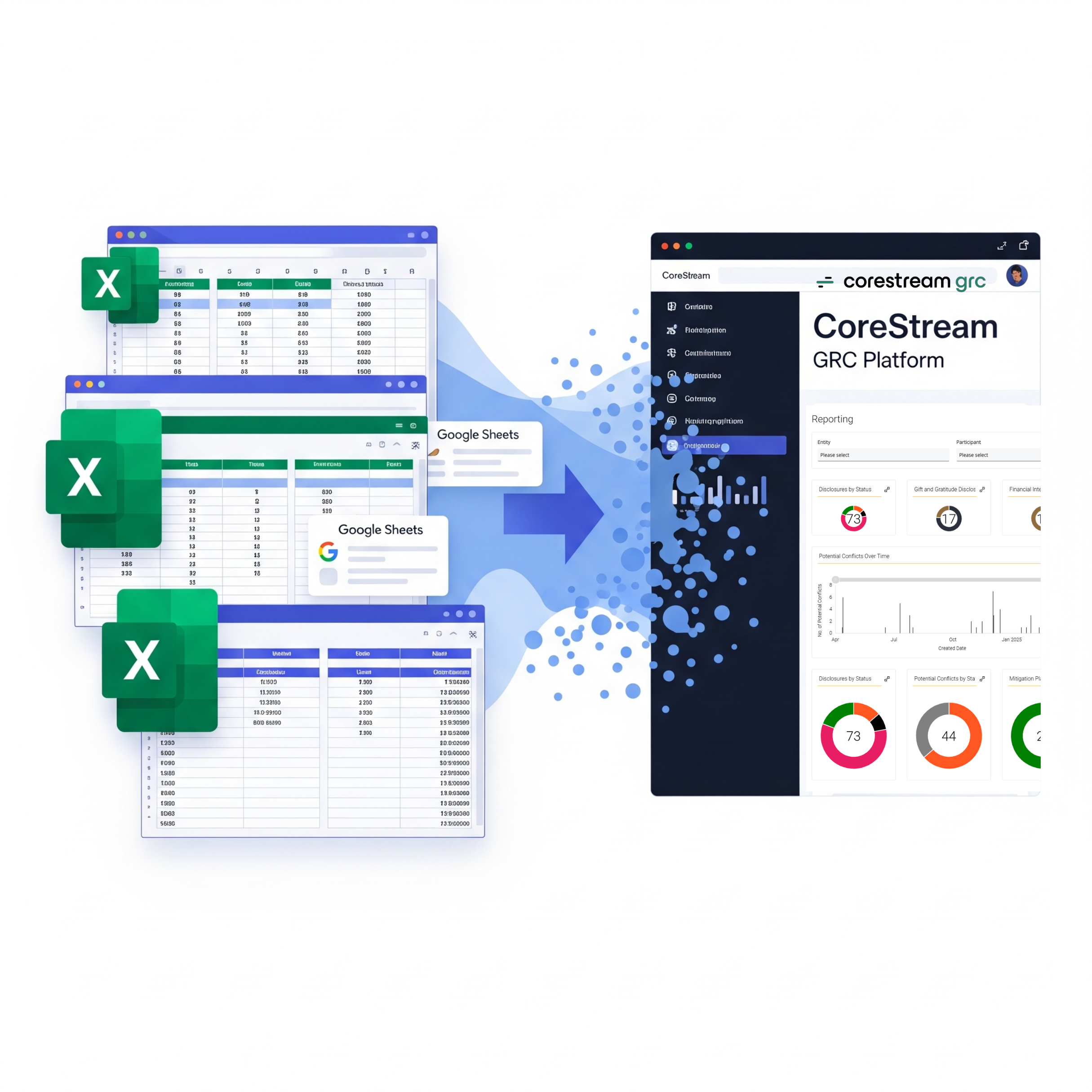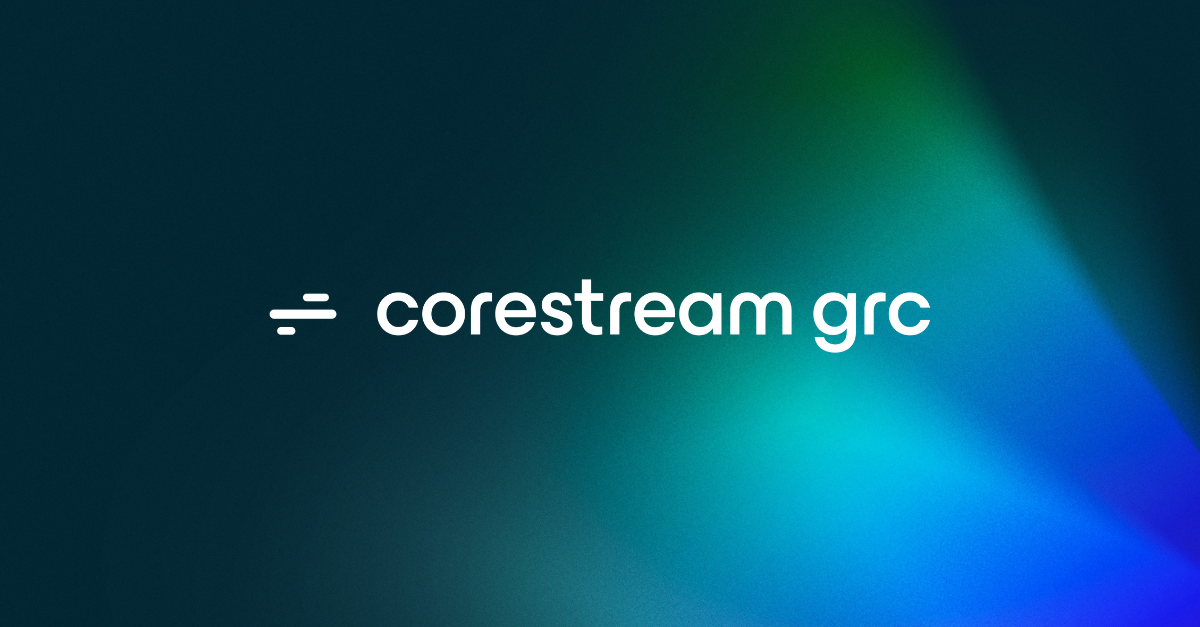The Excel and Google Sheets safety net
Spreadsheets are universally used, an easily accessible way to organize and analyze data. They often become the default starting point for many projects and processes simply because they’re already part of a business’s standard office tool suite.
Even when a dedicated tool is purchased, many professionals end up exporting data into a trusty CSV and diving back into spreadsheets. Worse still, if a point solution is hard to use or support is slow to respond, they grow frustrated and fully revert to spreadsheets, despite paying for an expensive tool.
No harm, no foul, right?
Wrong.
The hidden risks of the spreadsheet comfort blanket
Spreadsheets can pose significant business risks, including:
- Manual processes consuming valuable time and resources
- Inaccuracies and human errors going undetected
- Version control headaches and lack of audit trails
In fact, 90% of business-critical spreadsheets contain errors, and 1% of formulas are incorrect, with no clear record of who changed what or when.
Reactive privacy management: a real-world example
Consider a UK-based healthcare provider with over 19,000 employees. They were managing privacy and compliance processes using spreadsheets, emails, and even pen and paper. Receiving thousands of data access requests each year, all with a 30-day response window, the team was buried in manual admin work.
When team members were on vacation or unexpectedly off sick, the challenge only grew. Without a single source of truth, it was nearly impossible to reassign work or track ownership and accountability.
“Historically, there was a mixture of requests via paper forms and email; a large proportion came through the post. There was a clear need to standardize, centralize, and digitize. It was certainly a challenge due to the increasing volume.”
— Head of Information Security & Data Protection Officer.
Replacing spreadsheets with a dedicated GRC tool
It can be difficult to justify replacing “free” spreadsheets with a system that might cost tens of thousands of dollars annually. The board isn’t interested in a Data Privacy Manager saving five hours a week on manual admin tasks, the value proposition must be bigger.
When evaluating vendors, they focused on three key requirements:
- Robust reporting capabilities
- Streamlined task management
- A full picture and single source of truth
For this healthcare provider, the focus shifted to visibility and assurance:
“Our new tool gives us the entire picture. We know where to focus now, which helps us prioritize and plan for the future.”
These elements not only transformed day-to-day privacy and compliance workflows but also delivered tangible benefits to leadership. The team could now approach privacy management strategically, using data-driven insights to plan hiring, allocate resources, and forecast trends.
Key benefits of upgrading from spreadsheets to a GRC platform
With an intuitive, flexible GRC platform, the healthcare provider was finally able to move off spreadsheets entirely. Manual tasks and endless chasing are now a thing of the past:
“We used to spend Wednesday mornings manually chasing FOI leads. Now, it’s all automated. We’ve got our Wednesday mornings back!”
This freed-up time enables the team to focus on higher-value strategic goals and continuous optimization:
“We can now plan ahead and proactively improve the service we provide.”
A strong GRC platform aligns risk and compliance back to what truly matters, business objectives. For many organizations, value means achieving the best outcomes at the lowest cost. In healthcare, that could mean improving patient care and experience while optimizing resources and reducing waste.
By eliminating time-consuming, error-prone spreadsheets, the privacy and compliance team can respond quickly and effectively to patient requests and use trusted data to forecast and improve future services.
Moving away from spreadsheets isn’t just an administrative upgrade, it can be a true business game-changer.
——————————————————————————–
Frequently Asked Questions (FAQs)
Why are spreadsheets risky for managing compliance or privacy data?
Spreadsheets are prone to human error, lack version control, and don’t provide audit trails. This makes them unreliable for managing compliance tasks, tracking data access requests, or maintaining regulatory assurance, especially at scale.
What are the downsides of using Excel or Google Sheets for risk management?
While accessible, Excel and Google Sheets can become a liability for risk management. They rely on manual inputs, can’t handle automated workflows, and offer poor visibility across teams. As your organization grows, spreadsheets quickly become unscalable.
How does a GRC platform improve compliance workflows compared to spreadsheets?
A GRC platform centralizes data, automates repetitive tasks, improves accountability, and enables real-time reporting. Teams can prioritize work based on risk, track ownership, and respond to audits or requests faster and more effectively.
Is it worth replacing free spreadsheets with an expensive GRC tool?
Yes, while spreadsheets may seem “free,” the hidden costs of inefficiency, errors, and missed deadlines can be significant. A GRC platform delivers long-term value through improved visibility, resource optimization, and strategic planning.
Can a GRC platform replace all manual spreadsheet-based processes?
Yes, the right GRC platform can replace spreadsheets entirely, from tracking compliance tasks and deadlines to managing risk registers, data requests, and audit trails, all in one central, automated system. You just need to find one that is as intuitive to use as a spreadsheet.
What’s a real example of switching from spreadsheets to a GRC platform?
A UK-based healthcare provider with 19,000+ employees moved from spreadsheets, emails, and pen-and-paper to a dedicated GRC platform. As a result, they automated manual tasks, improved visibility, and gained time back to focus on strategic goals.
Will a GRC platform still feel flexible like Excel?
Yes, modern agile GRC platforms are designed to be intuitive and flexible. While they offer structure, many still allow for customization, task management, and data filtering in ways that feel familiar to Excel or Google Sheets users.



